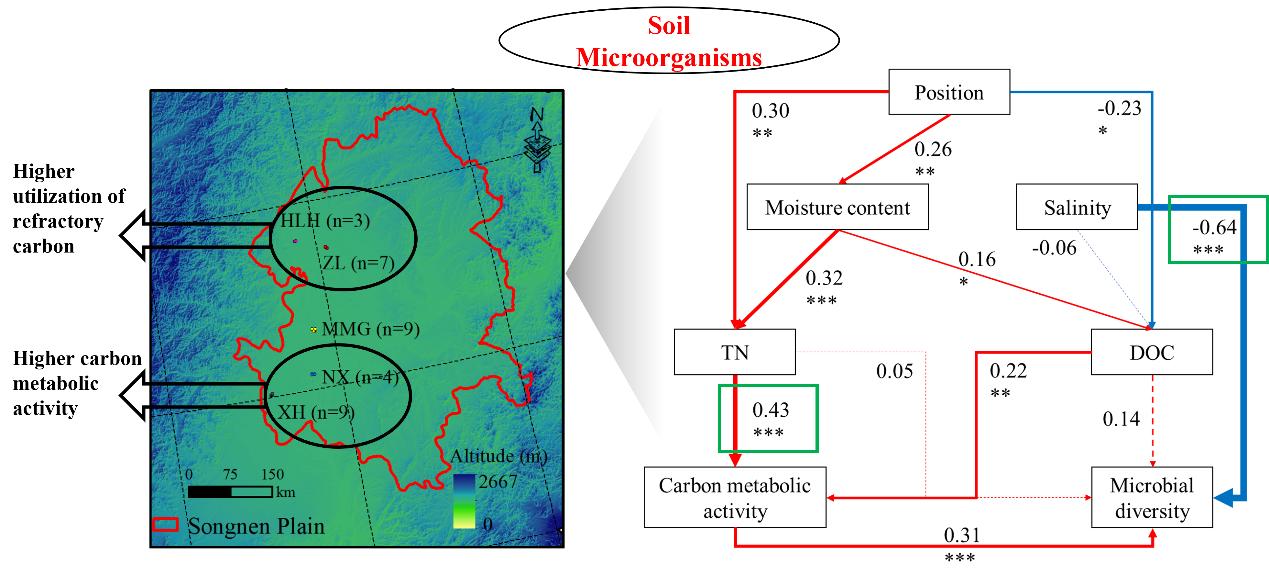Microbial carbon metabolic activity and functional diversity are essentially determined by the bioavailability of soil nutrients. Moreover, soil salinity and alkalinity affect the composition and structure of microbial communities. Although soil microorganisms play a major role in the wetland carbon cycle, the mechanisms influencing their spatial distribution remain elusive.
A research group led by SONG Yanyu from the Northeast Institute of Geography and Agroecology, CAS, revealed the distribution characteristics and influencing factors of soil microorganisms from five distinct reed wetlands in the Songnen Plain using the Biolog-ECO method and structural equation model.
This work was published in the journal of Applied Soil Ecology on 7 April.
According to the researchers, there were significant variations in carbon metabolic activity and the Shannon index of soil microorganisms in the Songnen Plain wetland across different geographical locations. This variation underscores the role of temperature in enhancing microbial growth, thereby elevating carbon metabolic activity and microbial diversity. In Niuxintaobao and Xianghai wetlands, soil microbes preferred to use labile organic carbon, whereas in Halahai and Zhalong wetlands, soil microbes preferred to use recalcitrant carbon. SEM pinpointed that TN and DOC as primary influencers of soil microbial carbon metabolic activity. In contrast, soil microbial diversity is primarily regulated by soil salinity, alkalinity, and DOC.
This study contributes to the scientific understanding of soil microbial metabolic characters in inland saline-alkali wetlands and provides valuable knowledge towards the optimization and maintenance of wetland soil carbon sink function from the perspective of the soil microbial community.

Fig. 1. Location of the study area and structural equation models (SEM) showing the direct and indirect effects on soil microbial carbon metabolism activity and functional diversity in the Songnen Plain wetlands.
Keywords:
Inland saline-alkali wetland, Biolog-ECO, Soil microorganisms, Spatial distribution, Total nitrogen
Contact:
SONG Yanyu
Northeast Institute of Geography and Agroecology, Chinese Academy of Sciences
E-mail: songyanyu@iga.ac.cn
Attachment:
Soil microbial functional diversity is primarily affected by soil nitrogen, salinity and alkalinity in wetland ecosystem
https://doi.org/10.1016/j.apsoil.2024.105407